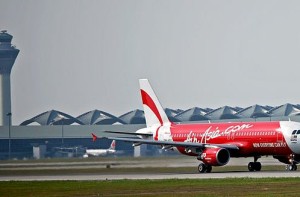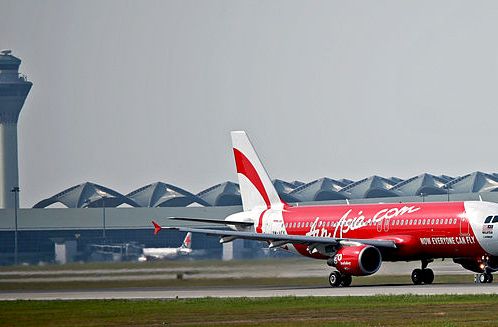 International air freight markets, in contrast to air passenger demand which remains vibrant, continue to be weak, according to traffic figures for February released by the Association of Asia Pacific Airlines (AAPA).
International air freight markets, in contrast to air passenger demand which remains vibrant, continue to be weak, according to traffic figures for February released by the Association of Asia Pacific Airlines (AAPA).
February saw the region’s airlines carry 23.7 million international passengers, a solid 8.2% increase compared to the same month last year. The growth in leisure travel volumes associated with the Lunar New Year festive period, as well as strong long-haul passenger demand, translated to a 9.5% surge in traffic in revenue passenger kilometer terms. Capacity expansion matched demand growth, with load factors for the month marginally lower at 78.2%.
By contrast, international air cargo demand suffered from the weakness in global trade volumes, as well as the Lunar New Year seasonal slowdown in factory operations in the region. This was reflected in a 12.1% decline in air cargo demand as measured in freight tonne kilometer (FTK) terms for the month.
Freight load factors for the region’s carriers remained under pressure, with the average international freight load factor registering an 8.6 percentage point decline to 56.8%, after accounting for a 1.3% expansion in offered freight capacity.
Commenting on the results, Andrew Herdman, AAPA director general, said, “The solid growth trend in passenger volumes seen throughout last year has been maintained, with Asian carriers reporting 9.3% growth in the number of international passengers carried in the first two months of 2016. However, air cargo markets are showing further declines, reflecting the slowdown in global trade and raising some deeper concerns about the future outlook for the wider global economy.”
Cathay Pacific cargo liftings fall 10%
Meanwhile, Cathay Pacific Airways reported a double-digit drop in the volume of cargo and mail uplifted for February 2016 by its airlines Cathay Pacific and Dragonair, even as the number of passengers carried rose compared to the same month in 2015.
The two airlines carried 117,299 tonnes of cargo and mail in February, a 10.1% decrease compared to the same month last year. The cargo and mail load factor fell by 7.5 percentage points to 58%. Capacity, measured in available cargo/mail tonne kilometers, was up by 1.1% while cargo and mail revenue tonne kilometres (RTKs) flown decreased by 10.4%.
In the first two months of 2016, tonnage carried fell by 4.6% against a 1.8% increase in capacity and a 5.2% drop in RTKs.
Cathay Pacific and Dragonair carried a total of 2,746,629 passengers last month—an increase of 2.7% compared to February 2015. The passenger load factor fell by 2.5 percentage points to 82.4% while capacity, measured in available seat kilometers, grew by 8.6%.
In the first two months of 2016, the number of passengers carried rose by 6.7% compared to a 7.2% increase in capacity.
“Airfreight demand dropped away sharply in the early part of the month as factories in Mainland China closed down for the Chinese New Year holiday,” said Cathay Pacific general manager for cargo sales and marketing Mark Sutch.
He added: “In comparison to the holiday period last year, demand was much slower in picking up after factories reopened, which led to a higher concentration of lower-yield cargo from Southeast Asia and India being uplifted onto our transpacific freighter flights. The sustained drop in fuel prices has led to older aircraft becoming more economically viable. The resulting overcapacity continues to put downward pressure on cargo yields.”
Changi airport shows flat cargo growth
In Singapore, Changi Airport announced it achieved a second month of double-digit growth in passenger movements in February 2016, with traffic rising 11.7% to 4.6 million. Aircraft movements were 7.7% higher with 28,520 landings and takeoffs, while cargo shipments were maintained at 135,900 tonnes compared to the same period last year.
Drewry: Rates still falling
In related news, U.K.-based shipping consultancy Drewry said airfreight rates continued to fall for the fourth consecutive month in February, hitting the lowest point on record since Drewry’s “Sea & Air Shipper Insight” report began monitoring airfreight rates in May 2012.
Drewry reported its East-West Air Freight Price Index declined by 3.8 points in February to a reading of 79.2. In U.S. dollar terms, average freight rates were down 4.5% month-to-month and 18.9% year-over-year to $2.57 per kilogram.
According to Simon Heaney, senior manager of supply chain research, Drewry expects “airfreight rates to remain challenged over the course of the year by weak global demand yet rising capacity, as buoyant passenger traffic releases more bellyhold space.”
Drewry’s Air Freight Price Index is a weighted average of all-in airfreight “buy rates” paid by forwarders to airlines for standard deferred airport-to-airport air freight services on 21 major east-west routes for cargoes above 1,000 kilograms.
Photo: Jyi1693





